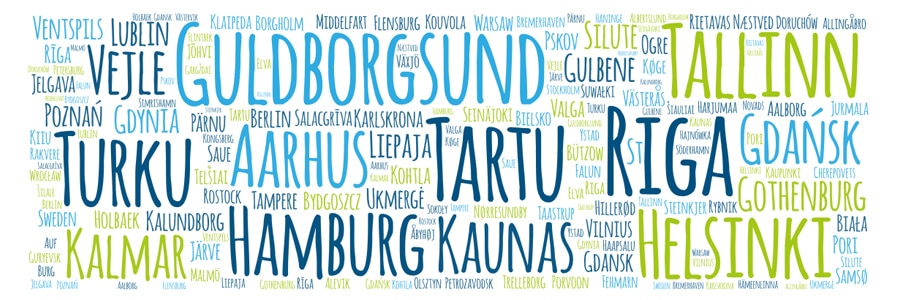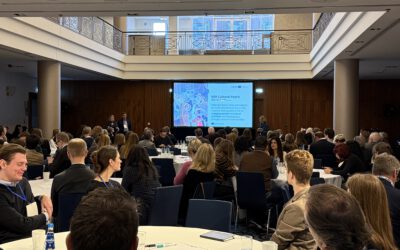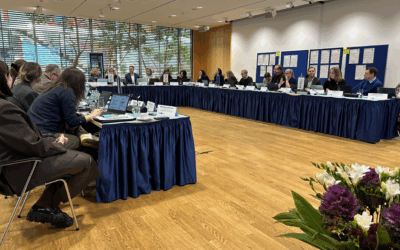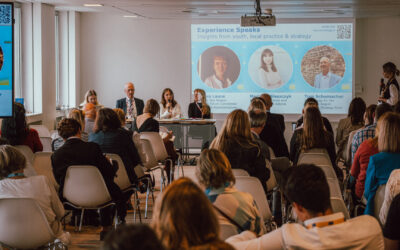Interreg is all about the regional development of municipalities and cities. Every tenth project partner in projects funded by Interreg Baltic Sea Region is a local public authority, i.e. an institution involved in governing a municipality or city. But why exactly do they participate in cooperation projects?

Interreg helps municipalities and cities of all sizes
Guldborgsund municipality, located on the islands of Falster and Lolland in south eastern Denmark, is one of the most active municipalities. Several departments contribute to five of the 123 projects in the Programme, from the Centre for Engineering for Environment to the Centre for Citizens and Branding. Among mid-sized cities, Tartu in Estonia is particularly active, taking part in eight projects. And the city council of the second largest city in the Baltic Sea region, Riga, tops the list, being involved in as many as nine projects. Overall, more than 170 local public authorities among more than 1500 project partners are involved in 64 projects funded by Interreg Baltic Sea Region.
Preben Thisgaard from the Water Utility of Kalundborg (Denmark) explains what his organisation gained from the Interreg project CWPharma.
Local public authorities can be at the core of transnational cooperation
Transnational cooperation is often believed to be driven by national authorities or pan-Baltic organisations. However, it is obvious that local public authorities can also be drivers of such cooperation and play an important role in cooperation projects.
There are 15 projects in Interreg Baltic Sea Region led by a local public authority. In the project cities.multimodal, the city of Rostock, Germany, took the lead of an Interreg project for the first time after ten years of working in transnational projects. “We want our staff to be inspired and to look over the edge of the plate – that is why we did not take any model cities for sustainable urban transport on board, but cities on the same level as our city with similar problems,” explains Holger Matthäus, Rostock’s Senator for Building and Environment.
Several projects are designed around local public authorities that test new solutions in a coordinated manner to learn from each other – there are 13 such projects which involve five local public authorities or more. In such projects, Interreg helps municipalities and cities make better use of their limited resources. “Region Örebro County is aiming for a fossil free, transport-efficient society. In order to achieve this, we think an exchange of experience and collaboration extending beyond county and national borders is key,” says Mats Gunnarsson , member of the Örebro municipal council in Sweden about Scandria2Act. And Julia Slav of the Council of Municipalities of St. Petersburg, Russia, stresses: “With the help of our strong StratKIT consortium, we intend to bring green public procurement, circular economy, and social cohesion to the agenda of local communities and business.”
Interreg Baltic Sea Region in facts: Local Public Authorities from Interreg Baltic Sea Region
Interreg delivers results attractive to municipalities and cities
Funding for the local public authority partners mainly comes from the European Regional Development Fund and ranges from EUR 16,000 to 825,000 for a project typically running three years. With the funding, municipal actors can realise small investments, e.g. a test installation for LED streetlights (LUCIA) or a bio-reactor for better waste water treatment (IWAMA).
However, the main benefit of transnational Interreg cooperation is less tangible: learning from each other in order to implement good solutions on the ground. Jürgen Krempin , Head of International Co-operation of Hamburg Fire and Rescue Service in Germany about the joint work in HAZARD: “We are running different emergency exercises in Hamburg, in Klaipeda and here in Turku. The main target for me is to exchange experience and knowledge. We can see the best practices: What is done well here in Turku might also be the best solution in Hamburg.“
It might be more than just the staff working in the projects who are learning. “Interreg projects are very helpful because you get a chance to take city planners or decision makers to other places where, e.g. a certain mobility measure is already working, to convince them it’s possible – that’s much more effective than just papers, visions, and talking,” sums up Monika Evini, former mobility manager at the City of Gdansk in cities.multimodal her experience with Interreg projects over several years. This way, transnational Interreg cooperation can be a vehicle to internally push for good solutions in your city or municipality.
Fiona Woo, who is supporting projects at the Programme’s Managing Authority/Joint Secretariat in Rostock, Germany has been closely following the NonHazCity project and concludes: “NonHazCity is a great example of what Interreg can do.” NonHazCity aimed to reduce the input of harmful chemicals from cities to the Baltic Sea. The city of Stockholm had already had an action plan for the municipality to reduce harmful substances in place since 2014. In the project, seven other cities used it as a blueprint to develop such plans for their own municipalities. And in the follow-up project NonHazCity 2, these cities start implementing the action plans and monitor the effects. “Interreg helps municipalities and cities not to reinvent the wheel, but to use good solutions already in place elsewhere in the region,” concludes Woo.
Article by Stefanie Maack with support of Fiona Woo (Interreg Baltic Sea Region Managing Authority/Joint Secretariat).






